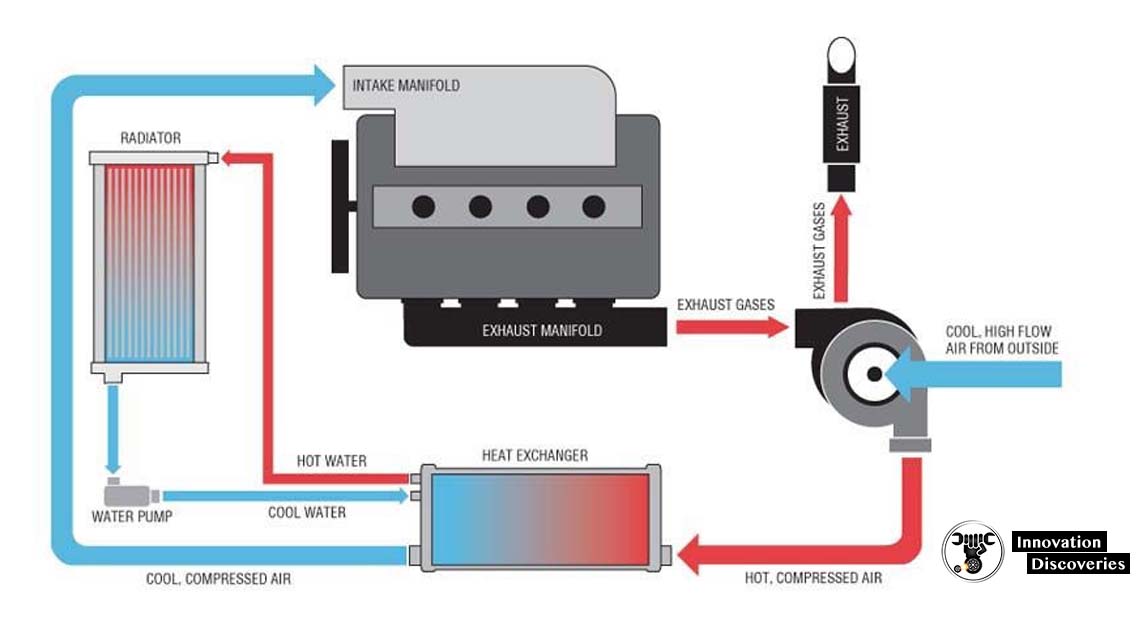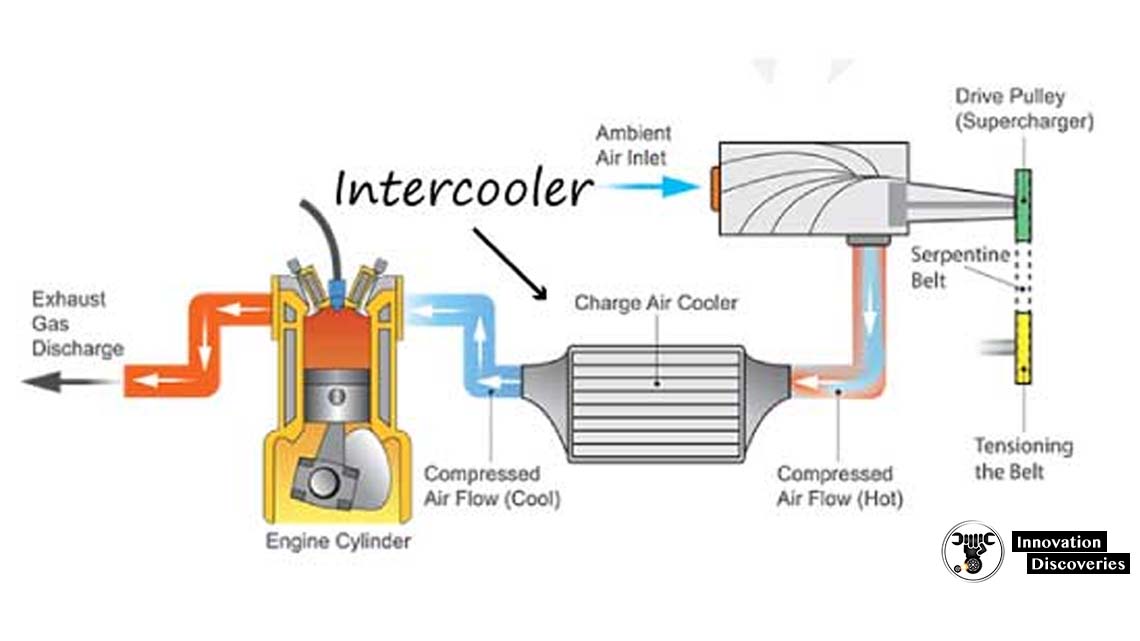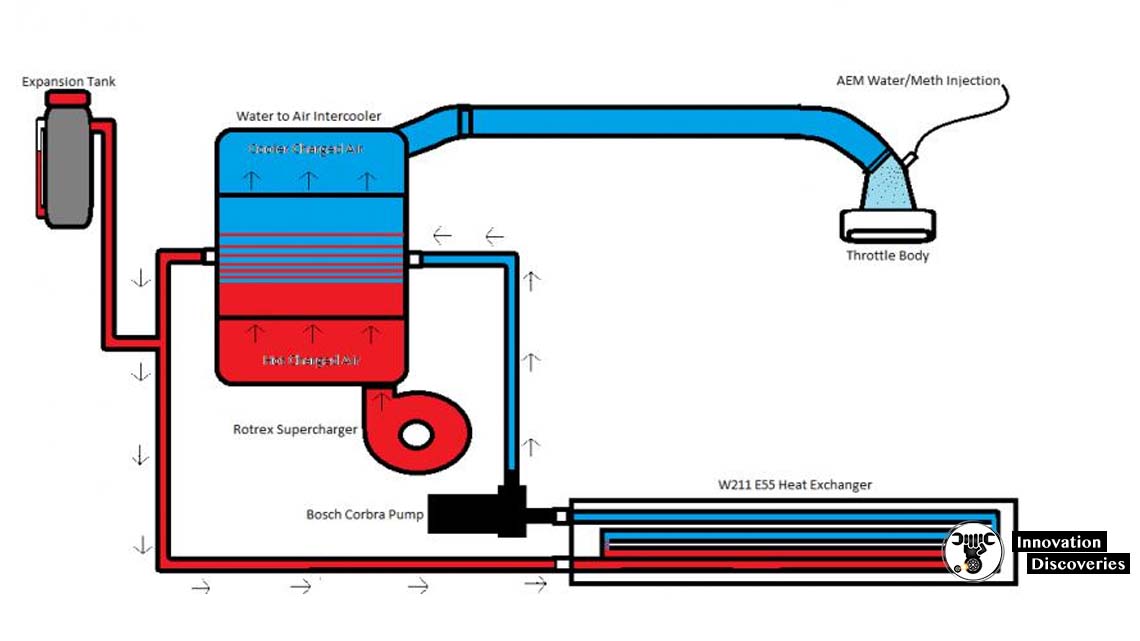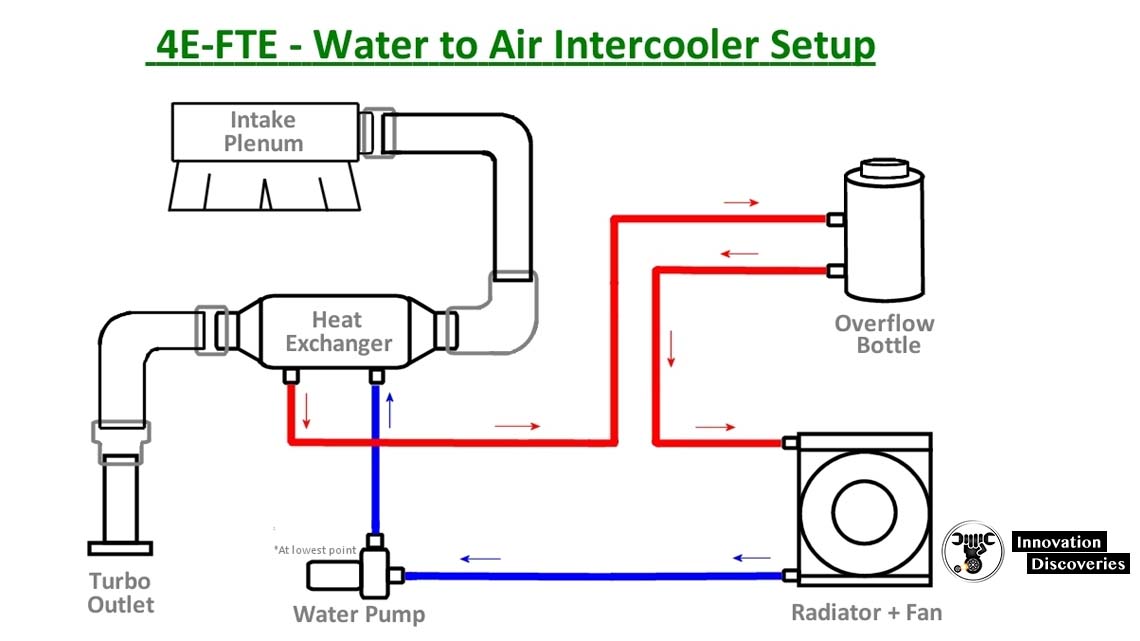
What is an intercooler?
An intercooler is a mechanical device used to cool the intake air on engines fitted with forced induction (either a turbocharger or a supercharger) system.

What does an intercooler do?
The intercooler’s job is to cool down the air after it has been compressed by the turbo or supercharger, but before it enters the engine.
How does an intercooler work?

Turbochargers work by compressing air, increasing its density before it reaches the cylinders of the engine. By squeezing more air into each cylinder, the engine is able to burn proportionally more fuel, creating more power with each explosion.
This compressing process generates a lot of heat, and increases the temperature of the air entering the engine. Unfortunately, as air gets hotter, it also becomes less dense, reducing the amount of oxygen available in each cylinder and impacting on performance!
The intercooler works to counteract this process, cooling the compressed air to provide the engine with more oxygen, and improving the combustion in each cylinder. In addition, by regulating the temperature of the air, it also increases the reliability of the engine, by ensuring the air to fuel ratio in each cylinder is maintained at a safe level.
TYPES OF INTERCOOLER
There are two main types of intercooler, which work in different ways:
1. Air to Air Intercooler
An air to air intercooler is an intercooler that uses air to cool air. Meaning the exchange of heat that occurs is between the air that you have charged in your charge pipes and the air that is flowing through the intercooler. Air to Air intercoolers are only as efficient as the ambient airflow (air temperature outside) that they see. Placement of these types of intercoolers is therefore very important in the efficiency of this type of intercooler.
Pro’s
1. Requires no power to work and therefore is easy to set up.
2. Requires no liquids to work and therefore no chances for leaks .
3. Doesn’t suffer from heat-soak as long as the intercooler is seeing good airflow.
Con’s
1. Efficiency is only as good as the ambient air temperature.
2. Efficiency is only as good as the amount of airflow the intercooler see’s.
3. Cannot be mounted anywhere, since it must be mounted in a location to see airflow.
2. Water to Air Intercooler

A Water to Air Intercooler is one where the exchange of heat occurs between water and air. Water is pumped through the intercooler so that the heat from your charge pipes is transferred to the water. This type of set-up can be mounted anywhere, and just needs to have water plumbed to it. Because of its requirement for the flow of water, this type of intercooler requires a water pump, a reservoir, and a heat exchanger for the water mounted somewhere that will receive good airflow.
Pro’s
1. Really good efficiency, so the size of the intercooler can be smaller.
2. Efficiency can be exaggerated by using ice, or other chemicals to
produce normally un-realistic temperatures for short amounts of time.
3. Can be mounted anywhere along the charge piping route.
Con’s
1. Requires a lot of other accessories to work.
2. Because it is more complex, it naturally causes more opportunity for problems, like leaks.
3. Can become heat soaked when used for long periods of hard driving and become terribly in-efficient.

